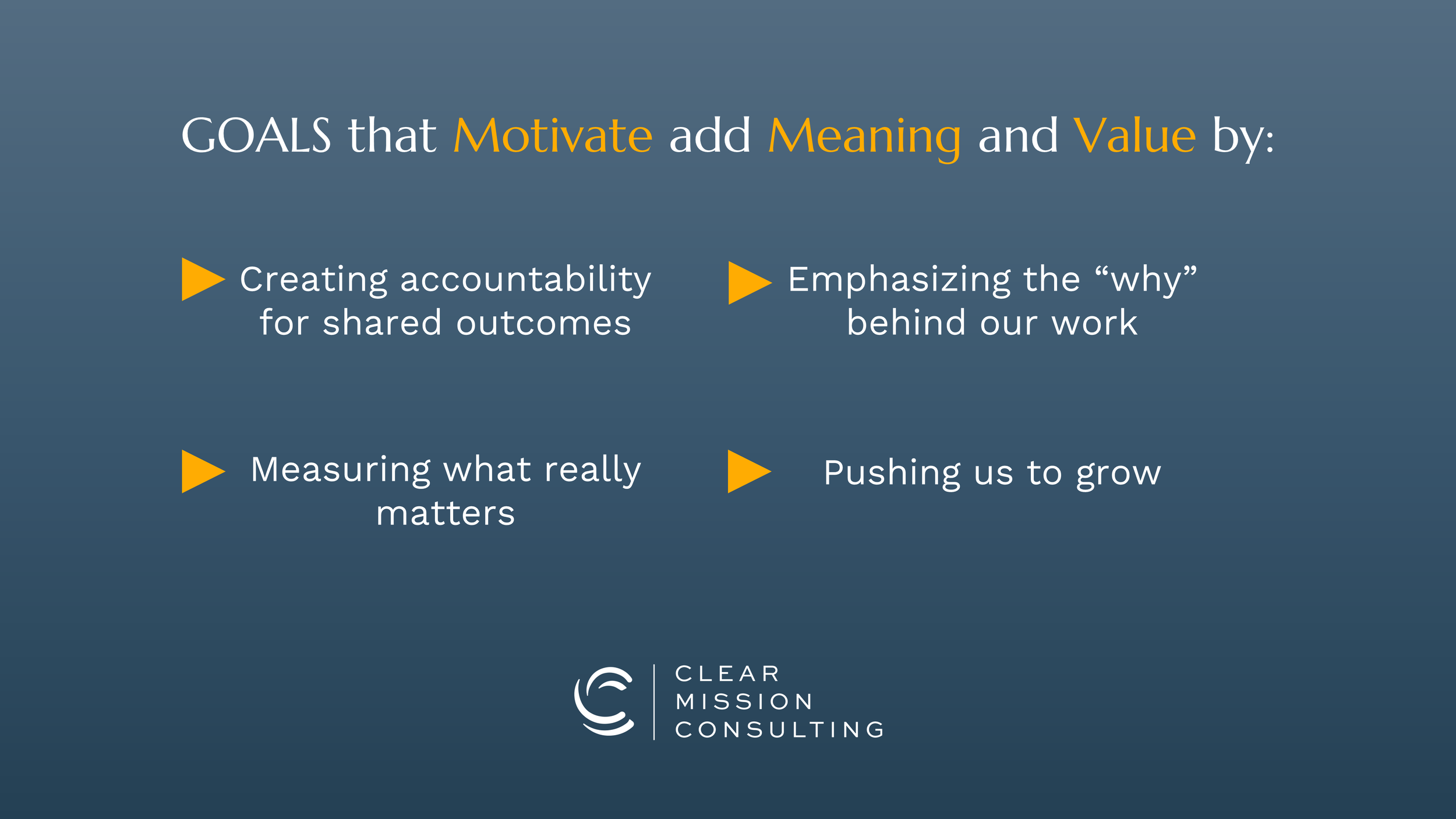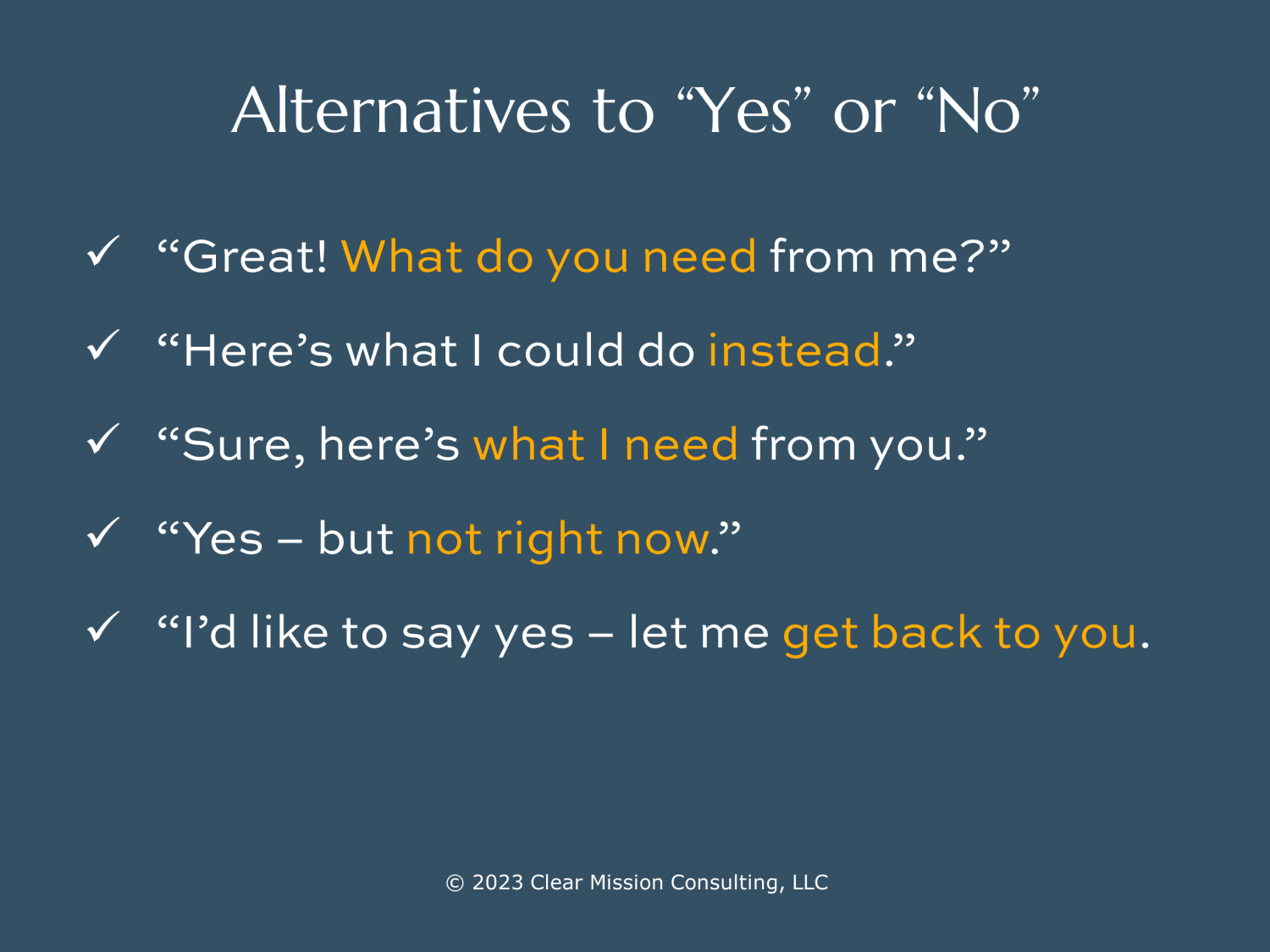Lens on Leadership
Two-minute tips for leaders on how to create the types of vision, plan, and culture that will move the needle for your mission.
Sign-up to get Lens on Leadership in your inbox each Thursday
Search the archives:
The Emotional Elephant in the Room
Suppressing - or worse, discounting- emotions in the workplace can be like trying to ignore an elephant in the room. You and your team will have more success dealing with them in a healthy way.
10 Resolutions to Make Strategy Matter This Year
Just as many of us fail to follow through on New Year's resolutions, many nonprofits struggle to put their strategies into practice. These 10 practices will help you make strategy matter.
Peace on Earth…or at Least at Work
Building an inclusive environment for your team not only improves performance. It also fosters commitment to your mission and strategy.
5 Ways to Turn Stakeholders into Shared Owners
Shifting stakeholders from passive supporters to committed co-owners might require a tough shift in mindset, or even operations. But the results are transformative.
Motivating Goals have These 4 Characteristics
What to set better goals that get results? Motivate your stakeholders, your team, and yourself with goals that provide clear meaning and value.
Why Aren’t They Listening?!
Being “right” is not enough. Leadership requires convincing others to join us in creating a better future.
Use Strategy to Make Confident Decisions
Decisions that impact your organization are much easier to make when you have a strategy to guide your choices.
Measure What Really Matters
Are you communicating how your activities contribute to your impact? In the social sector, the most valuable thing we can measure is our mission outcomes.
Keep Up the Fight Without Burning Out
The journey ahead is long and arduous. When we allow ourselves to feel personally responsible for shortening the path, we do our mission a disservice and risk becoming another casualty of the trek.
Leading Through Uncertainty
As leaders, we are more likely to encounter uncertainty than others. And we must take on the additional burden of creating certainty for our teams.
No More Pulling Rabbits Out of Hats
Planning isn't magic. But building a realistic plan will save your team from trying to pull a rabbit out of the hat to meet expectations.
Don’t Use “Listening” as a Smoke Screen for Inaction
While listening is essential to leadership, it cannot stop at facilitating debate – leaders must eventually put a stake in the ground and guide people to action.
Increase Accountability
Accountability fails when responsibilities are ambiguous or people don't follow through. Follow these practices to increase clarity and commitment.
Don’t Dilute Your Impact
It can be tempting to define our mission as a broad "umbrella" encompassing many needs (and funding sources). But unless we focus on specific lanes, we risk diluting our impact.
Increase Engagement with the “Wrong Answer” Hack
The typical response to solicitations for input? Crickets. Avoid the frustration of stakeholder silence by giving them draft content (even if it's wrong) to comment on first.
Teach an Old Team New Tricks
Change is often desirable. Even necessary. Here are three keys to persuading a team to upend long-standing ways of doing things and embrace new goals or methods.
Avoiding Chaos – Five Categories of Crisis Response
It's hard to get ahead when you feel like you’re moving from crisis to crisis. But by making some time for strategic leadership, you can stop inevitable crises from turning into chaos.
Help Out AND Maintain Boundaries
Faced with a request, we might think our only options are to say "yes" or "no." But there are many ways to respect the request - and requestor - without overcommitting ourselves.
Drive Growth with Strategy
Organizational growth does not have to mean doing "more" of something. In fact, growth comes from knowing what to do more of, what to do less of, and what to continue doing well.
Got a Complaint? Put the Relationship First.
We often make others feel blamed by how we raise our complaints with them. Reframing the problem in a neutral way is the first step toward constructive resolution that preserves our relationship.





















